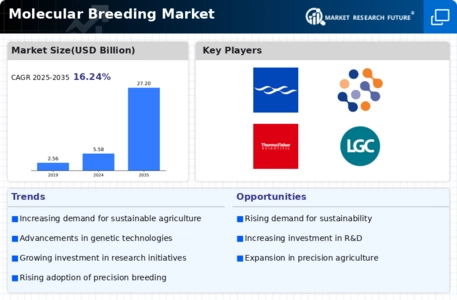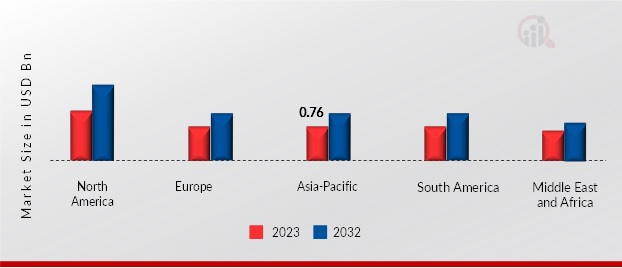Molecular Breeding Size
Molecular Breeding Market Growth Projections and Opportunities
molecular breeding market size of is shaped by several key factors that influence its growth and dynamics. Molecular breeding, also known as marker-assisted selection (MAS), is a modern plant breeding technique that utilizes genetic markers and molecular biology tools to improve crop varieties for desirable traits such as yield, disease resistance, and abiotic stress tolerance. One significant factor driving the demand for molecular breeding is the increasing global population and the need to sustainably feed a growing world. With challenges such as climate change, dwindling natural resources, and emerging plant diseases, there is a pressing need for crop varieties that can adapt to changing environmental conditions and produce higher yields.
Government policies and research funding play a crucial role in shaping the molecular breeding market. Public institutions and research organizations invest in molecular breeding research to develop improved crop varieties that address national and global agricultural challenges. Government agencies may provide grants, subsidies, or support programs to fund research projects, establish breeding programs, and promote technology transfer to the agricultural industry. Moreover, regulatory frameworks governing genetically modified organisms (GMOs) and plant varieties may influence the adoption and commercialization of molecular breeding products in different countries.
Technological advancements drive innovation and growth in the molecular breeding market. Researchers and breeders leverage cutting-edge technologies such as next-generation sequencing, high-throughput genotyping, and genome editing to accelerate the breeding process and identify genetic variations associated with target traits. Advanced bioinformatics tools and computational algorithms enable the analysis of large-scale genomic data and the prediction of genotype-phenotype relationships, facilitating the selection of superior breeding lines and the development of genetically improved crop varieties with desired traits.
Market factors such as changes in consumer preferences and market demand influence the adoption of molecular breeding in crop improvement programs. As consumers demand sustainably produced, nutritious, and high-quality food products, there is increasing interest in crop varieties developed through molecular breeding techniques. Traits such as disease resistance, enhanced nutritional content, and improved agronomic performance appeal to both farmers and consumers, driving demand for molecular breeding products in the agricultural market. Moreover, the adoption of molecular breeding can help breeders and seed companies differentiate their products in a competitive market landscape.
Economic conditions and market competition impact the molecular breeding market dynamics. The cost-effectiveness and scalability of molecular breeding technologies are essential considerations for breeders, seed companies, and agricultural stakeholders. Economic factors such as research and development costs, intellectual property rights, and commercialization strategies influence investment decisions and market access for molecular breeding products. Moreover, market competition among breeding companies, seed suppliers, and biotechnology firms drives innovation, collaboration, and strategic partnerships, benefiting farmers with a wide range of improved crop varieties and breeding services.
Environmental considerations are integral to the molecular breeding market, given its potential to enhance crop resilience, reduce chemical inputs, and promote sustainable agriculture practices. Molecular breeding offers opportunities to develop crop varieties with improved stress tolerance, resource use efficiency, and disease resistance, reducing the need for synthetic pesticides, fertilizers, and irrigation water. Moreover, genetically improved crop varieties can contribute to soil health, biodiversity conservation, and ecosystem resilience, promoting environmental sustainability and resilience in agroecosystems.









Leave a Comment